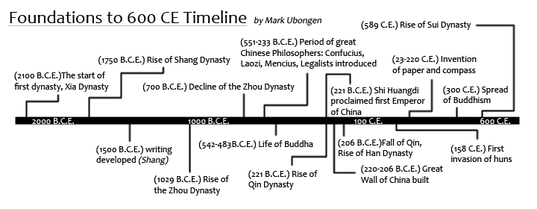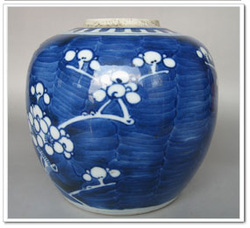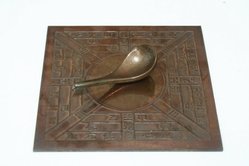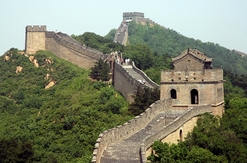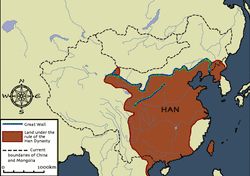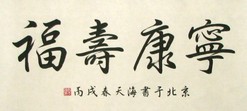Political Institutions of China by Kaenan D.
The Qin and Han dynasties are the two most important dynasties of this classical era. The Qin emphasized on centralization of government, while the Han epitomized and expanded the jurisdiction of bureaucracy. The political structure of classical China proved to be efficient and effective over a large mass of land. At the time China held the largest political system during the classical period.
One thing to note during this time period is that powerful local units were present. Strong bonds of patriarchal families were essential in maintaining order in an agriculture dependent society such as China. Either the family authority or the village leader would manage the property, planting, and harvest.
Strong local rule wasn’t a strong characteristic in Classical China. Shi Huangdi, the first emperor of china, took matters in his own hands and would violently extort taxes from local rulers. Later on he would establish a law code that would give severe punishments to offenders of certain (most) crimes.
The realization of having a strong complex bureaucracy resulted in the registry of approximately 130,000 bureaucrats which only represented 0.2% of the population. The examinations that the emperor made these bureaucrats do is one of the few examples of the first civil tests. Chinese government felt as if they should be lead by a scholarly elite class of men, so typically men of the upperclass were sent to schools.
The government of China would regulate the economy, judicial matters (crime), and the military. The government would standardize currencies, weights, and measurements, and promote technological and intellectual growth. Labor that was obligatory and the accumulation of taxes would keep centralization of government in check.
One thing to note during this time period is that powerful local units were present. Strong bonds of patriarchal families were essential in maintaining order in an agriculture dependent society such as China. Either the family authority or the village leader would manage the property, planting, and harvest.
Strong local rule wasn’t a strong characteristic in Classical China. Shi Huangdi, the first emperor of china, took matters in his own hands and would violently extort taxes from local rulers. Later on he would establish a law code that would give severe punishments to offenders of certain (most) crimes.
The realization of having a strong complex bureaucracy resulted in the registry of approximately 130,000 bureaucrats which only represented 0.2% of the population. The examinations that the emperor made these bureaucrats do is one of the few examples of the first civil tests. Chinese government felt as if they should be lead by a scholarly elite class of men, so typically men of the upperclass were sent to schools.
The government of China would regulate the economy, judicial matters (crime), and the military. The government would standardize currencies, weights, and measurements, and promote technological and intellectual growth. Labor that was obligatory and the accumulation of taxes would keep centralization of government in check.
Social Structures of China
by Joy R.
The social structure of china was always honored towards the elders, which they were not to disobey or mistreat. As well as bring patriarchal (male dominant), where women had no choice/say into any decisions.Women had to honor their husbands in anyway and must always obey them as if male were the parent and women were the child. Certain beliefs such as Confucianism influenced how the members of the family were to view each other. As time passed, the government defined the rights of the king, rulers of vassal states, and high officials. They started to also split China's people into four classes. Landlords and Peasants were the two higher classes, while Merchants and Craftsmen were of the two lower classes. At these times, everyone was to listen to the emperor and only the emperor.
Interactions of Cultures in China by Joy R. and Mark U.
In Early Chinese culture, people must all adapt to their customs unlike other countries like India; people or nomads could make culture adapt to them. China has only done this because they did not want to lose their culture, by letting people adapt they could change the culture. China was a very isolated country and were very ethnocentric. Their fear of invasion and of outside ideas led to certain ways to keep them out, such as the building of the Great Wall of China during the Qin Dynasty. China did not have a set religion to follow, because it was more important to listen to the emperor than having a unitary belief system. Confucianism and Daoism though were the two major religion systems that the Chinese communities mostly believed in. Confucianism was first developed while King Fuzi (551 to 478 B.C.E) was in power. His belief was that he was the defender of Chinese tradition, to secure systems of ethics, and personal virtue would lead to solid political institutions. Daoism on the other hand was when the people believed and embraced harmony in nature. In later Chinese dynasties, Buddhism started to spread across China. Chinese art was very detailed work and represented their country's rich heritage. Most common artworks had geometric qualities and symbols in Chinese writing. Chinese architecture was very diverse also. The most evident structure built to show their architectural skills was the building of the Great Wall of China during the Qin Dynasty. Applied science also played a role in Chinese culture. Time shows early advancements with astronomy as well as the development of accurate calendars.
Chinese Economic Systems by Kaenan D.
China’s economy was based mainly based off agriculture, internal trade networks, and the advancement in technology. Chinese Upper Class pretty much controlled the influx of money by overseeing peasantry work and the accumulation of dues. Although the peasants provided services and taxes for the upper class lord, they did own a little bit of land.
Trade became crucial in the Zhou and more distinctively in the Han Dynasties. Luxurious items for the upper class was one of the main things focused on in trade, these items include silks, jewelry, leather goods, and furniture. Foods, such as wheat and rice, were another thing that was popular in trade. The production of copper coins and standardization of currency expedited trade; sometimes merchants would trade with the people of India.
Technological advancements, such as the ox-drawn plows, would help agriculture excel. During the Han dynasty a collar was designed for draft animals that would allow them to pull wagons, plows, and carts without choking themselves. Advancements of technology also included the fashioning of pulleys and gears that would spur the beginning of iron mining. Iron mining means iron tools, which some jobs would be easier to complete. The invention of a primitive water-powered mill would boost the manufacturing industry ( manufacturing of textiles and pottery).
Trade became crucial in the Zhou and more distinctively in the Han Dynasties. Luxurious items for the upper class was one of the main things focused on in trade, these items include silks, jewelry, leather goods, and furniture. Foods, such as wheat and rice, were another thing that was popular in trade. The production of copper coins and standardization of currency expedited trade; sometimes merchants would trade with the people of India.
Technological advancements, such as the ox-drawn plows, would help agriculture excel. During the Han dynasty a collar was designed for draft animals that would allow them to pull wagons, plows, and carts without choking themselves. Advancements of technology also included the fashioning of pulleys and gears that would spur the beginning of iron mining. Iron mining means iron tools, which some jobs would be easier to complete. The invention of a primitive water-powered mill would boost the manufacturing industry ( manufacturing of textiles and pottery).
Chinese Inventions and Technology by Shanice C.
Pottery and Porcelain:
The Chinese were able to control the iron content in the porcelain to reduce the color interference, making the porcelain white. They mastered porcelain-making during the Ming dynasty, and began exporting them to Japan and Europe. Kilns could fire kaolin, a type of white clay, at a temperature of about 1,200°C in order for it to form a hard, non-porous material. They made the porcelain from kaolin by using feldspathic stone, known as petuntse, to give it a translucent, glass-like appearance. During the Yin and Shang dynasties, the Chinese started using porcelain in their pottery-making. Specialized kilns were used to advance the making of porcelain.
Silk:
China started making silk in about 2,700 B.C. It is said to be that Empress Si Ling Chi discovered silk because a silkworm moth cocoon fell into her tea from a mulberry tree and after many attempts, she was able to weave the silk filament into fabric. The reason silk is so shimmery because it comes from a triangular prism structure of the silk fabric allowing it to reflect light. Even today, to make silk they placed the silkworm moth’s cocoons in hot water to kill the larvae and release the silk fragments. Then, the fragments were combined to form yarn; each cocoon yielded 500 to 1,200 yards of silk. Silk was the most valuable trade item and resulted in the famous Silk Road trading route. Although, silk was kept a secret by the government until India found out in 300 A.D.
Compass:
During the Qin dynasty, China made the world’s greatest compass, made from lodestone. Lodestone is an iron oxide-based mineral aligning itself in north and south directions because of the Earth’s magnetic field. Between the years of 1405 and 1433, Zheng Hi was the first recorded person to use the compass on his eight sea voyages.
Paper and Printing:
3,000 years after the ancient Egyptians used papyrus for writing, the Chinese invented paper. A government official from the eastern Han dynasty named Cai Lun created paper by mixing bark from a mulberry tree and bamboo fibers with water. Then he drained and dried the mixture on a flat bamboo frame. Other materials used were tree bark, hemp, linen, and fishing nets. Different types of paper were used mostly for calligraphy, such as hemp paper, hide paper, bamboo paper, and xuan paper which were produced from a kind of pine tree. The development of printing influenced the advances in papermaking. In the 7th century, China used clock printing, also known as xylography. The Buddhist scripture was the earliest known printed text which was printed in 868 A.D. The blackline method required a new carved block for every page so it was very time-consuming to print books. The movable printing type was invented during the Song dynasty and the Chinese carved the characters from wood which could be arranged and refused. Clay was used as paper as well, but they broke easily. The Ming dynasty refined the movable type and they began printing books using the two-color printing process. China’s paper and printing technology precipitated to spread of knowledge among the Chinese literacy elite and aristocracy.
The Chinese were able to control the iron content in the porcelain to reduce the color interference, making the porcelain white. They mastered porcelain-making during the Ming dynasty, and began exporting them to Japan and Europe. Kilns could fire kaolin, a type of white clay, at a temperature of about 1,200°C in order for it to form a hard, non-porous material. They made the porcelain from kaolin by using feldspathic stone, known as petuntse, to give it a translucent, glass-like appearance. During the Yin and Shang dynasties, the Chinese started using porcelain in their pottery-making. Specialized kilns were used to advance the making of porcelain.
Silk:
China started making silk in about 2,700 B.C. It is said to be that Empress Si Ling Chi discovered silk because a silkworm moth cocoon fell into her tea from a mulberry tree and after many attempts, she was able to weave the silk filament into fabric. The reason silk is so shimmery because it comes from a triangular prism structure of the silk fabric allowing it to reflect light. Even today, to make silk they placed the silkworm moth’s cocoons in hot water to kill the larvae and release the silk fragments. Then, the fragments were combined to form yarn; each cocoon yielded 500 to 1,200 yards of silk. Silk was the most valuable trade item and resulted in the famous Silk Road trading route. Although, silk was kept a secret by the government until India found out in 300 A.D.
Compass:
During the Qin dynasty, China made the world’s greatest compass, made from lodestone. Lodestone is an iron oxide-based mineral aligning itself in north and south directions because of the Earth’s magnetic field. Between the years of 1405 and 1433, Zheng Hi was the first recorded person to use the compass on his eight sea voyages.
Paper and Printing:
3,000 years after the ancient Egyptians used papyrus for writing, the Chinese invented paper. A government official from the eastern Han dynasty named Cai Lun created paper by mixing bark from a mulberry tree and bamboo fibers with water. Then he drained and dried the mixture on a flat bamboo frame. Other materials used were tree bark, hemp, linen, and fishing nets. Different types of paper were used mostly for calligraphy, such as hemp paper, hide paper, bamboo paper, and xuan paper which were produced from a kind of pine tree. The development of printing influenced the advances in papermaking. In the 7th century, China used clock printing, also known as xylography. The Buddhist scripture was the earliest known printed text which was printed in 868 A.D. The blackline method required a new carved block for every page so it was very time-consuming to print books. The movable printing type was invented during the Song dynasty and the Chinese carved the characters from wood which could be arranged and refused. Clay was used as paper as well, but they broke easily. The Ming dynasty refined the movable type and they began printing books using the two-color printing process. China’s paper and printing technology precipitated to spread of knowledge among the Chinese literacy elite and aristocracy.
